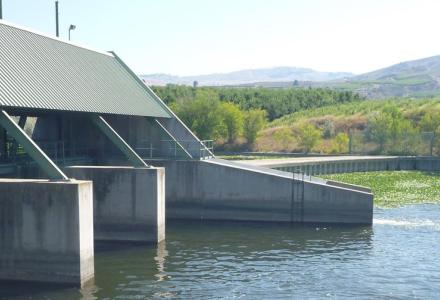
With the beginning of spring, we wait with bated breath for upcoming blooms of flowers, trees … and algae.
Nutrients are a critical component of Great Lakes ecosystems. However, issues emerge when there are too many or too few nutrients. Lake Erie has long suffered from harmful algal blooms, fueled by nutrients near the shoreline that are higher than they should be.
Canada and the United States set a goal in 2016 to reduce phosphorus loads entering Lake Erie by 40 percent from 2008 levels, but have made limited progress. The International Joint Commission’s Great Lakes Science Advisory Board, in collaboration with the Great Lakes Water Quality Board, recently published two reports that focus on addressing the delicate balancing act of nutrients in Lake Erie.
In September 2023, the Great Lakes Science Advisory Board presented the new reports, which assessed existing rules and agencies that coordinate and support activities to address nutrient imbalances. In case you missed it, you can watch a recording of the webinar below.
Tracking progress toward meeting the nutrient reduction target and Lake Erie’s response to changes requires an adaptive management approach. Adaptive management is a structured, iterative process for decision making in the face of the unknown.
Canadian and US government agencies and researchers have agreed on a draft Lake Erie Adaptive Management Framework. The Great Lakes Science Advisory Board-Research Coordinating Committee’s report “Evaluation of Institutional Arrangements to Affect Nutrient Management Through Adaptive Management” examined the draft framework’s governance structure to determine if it is being implemented effectively and sustainably.
The committee’s report finds that the draft framework is working, but its implementation is informal. Some aspects of the framework, like funding and coordination of efforts across government agencies, differ depending on where they are happening. For example, funds for coordinating adaptive management activities come from various Canadian and US jurisdictions, and these resources are often short-term.
Collaborative efforts also tend to vary among jurisdictions, resulting in the need for greater alignment and coordination of existing activities. The Lake Erie Nutrient Adaptive Management Framework provides an opportunity to increase collaboration and coordination between domestic and federal agencies on activities like research, monitoring and modeling. To work more effectively, the report finds, dedicated staff are needed to support and manage adaptive management processes outlined in the draft framework.

A tractor applies fertilizer to crops. Nonpoint source pollution from agricultural runoff has been identified as the main contributor to nutrients in the western and central Lake Erie basin. Credit: James Baltz, Unsplash
The second report by the Great Lakes Science Advisory Board and the Great Lakes Water Quality Board evaluated initial domestic action plans for Lake Erie and Lake Ontario.
Renewed every five years, domestic action plans are produced by federal, state and provincial governments to guide efforts to achieve the 40 percent reduction target. The boards’ 2023 report, “Nutrients in Lake Erie and Lake Ontario: Synthesis of International Joint Commission Recommendations and Assessment of Domestic Action Plans,” found that both countries rely on voluntary reduction programs for nutrient loadings from agricultural nonpoint sources. These sources are the main contributor of nutrients to the western and central basins of Lake Erie.
Better implementation of best management practices is crucial for reducing agricultural nonpoint source nutrient loadings. The report found that relying on exclusively voluntary programs creates barriers to rapid progress on nutrient loading objectives. Farmers may be reluctant to adopt these practices if the perceived risks are too high. To that end, the report makes recommendations on how the federal governments could promote the adoption of best management practices, including exploring a group-level economic instrument to reward implementation.
(Psst! Keep your eyes peeled for a Lake Erie special edition of the journal Aquatic Ecosystem Health & Management later this year that will include the report authors’ thoughts on these important nutrients topics!)
Addressing nutrient imbalances in Lake Erie is an ongoing effort. While successful efforts are underway, the Great Lakes advisory board reports highlight opportunities to enhance those efforts. The IJC shares the Canadian and US federal governments’ commitment to achieving the nutrients objectives for not just Lake Erie, but all the Great Lakes.

Rachel Wyatt is the communications officer at the IJC’s Great Lakes Regional Office.




